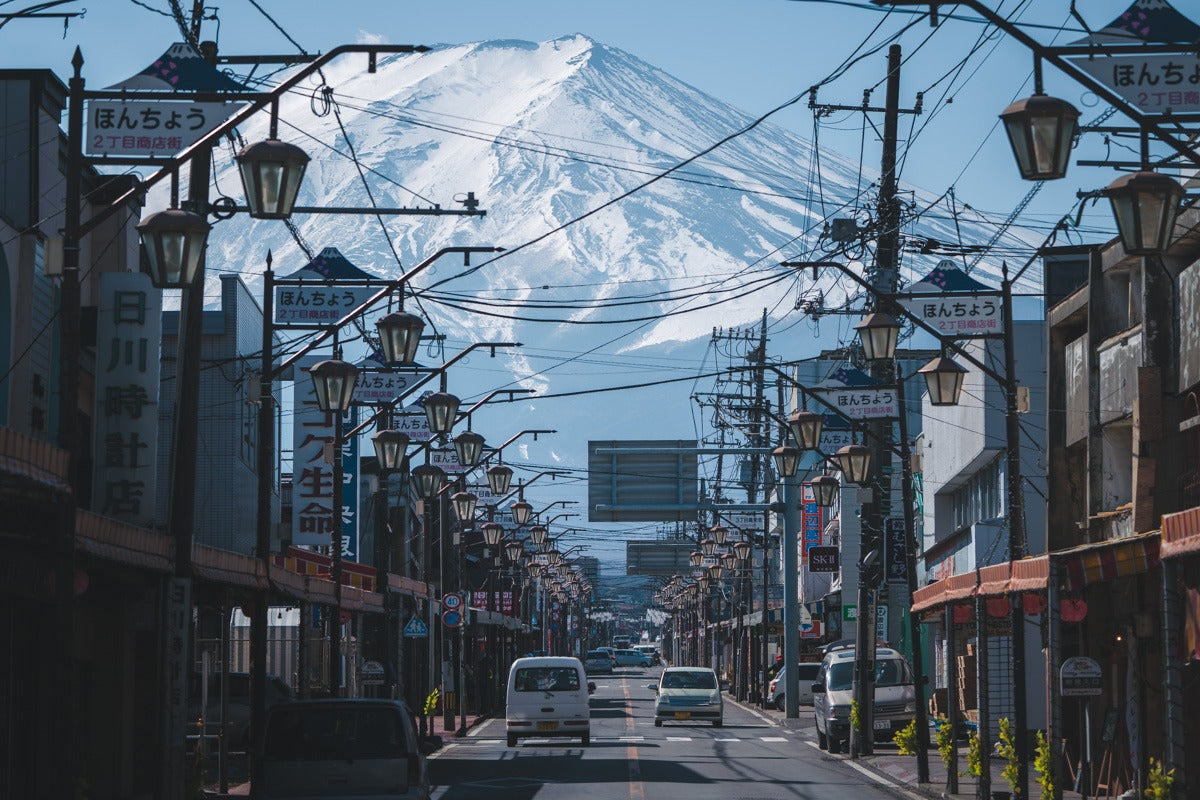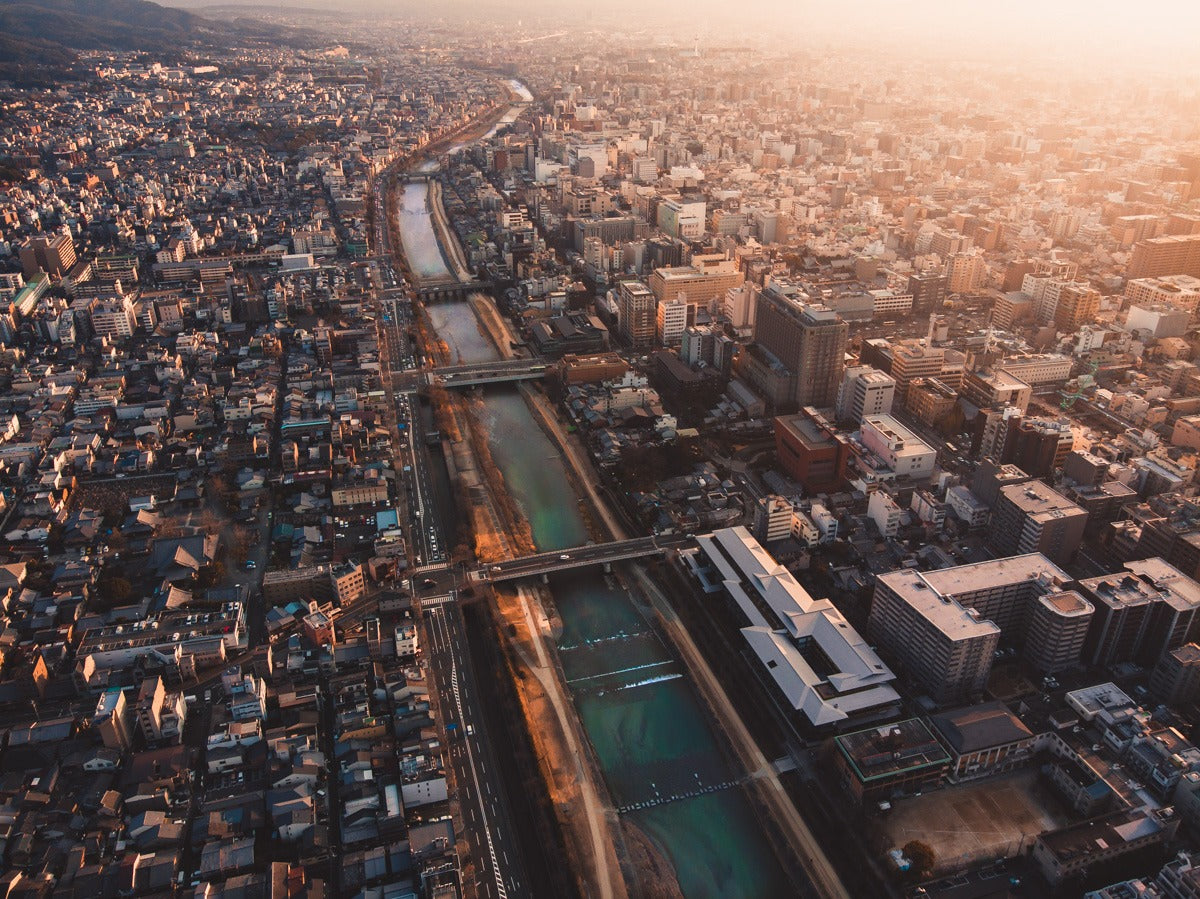This Japan itinerary is for first timers to Japan wanting to know exactly where to go and what to do.
Well, in this guide we'll be following the “Golden route” - a classic, beloved route that many new (and old) travellers to Japan take, but we'll be giving it a bit of a twist.
This Japan itinerary from Tokyo to Kyoto with a short stop to Hakone in between provides travellers with a diverse mix of urban sprawls, peaceful retreats and historic Japanese culture.
It’s still a route I find myself returning to, even by happenstance, almost every time I visit Japan. Having now explored Japan from top to bottom, discovering new locations and off the beaten track experiences, whenever I recommend a route to newcomers, I still recommend the Golden Route, but with a little twist. And with these little changes, this Japan itinerary looks like this:
-

Day 1 - 3
Tokyo
This Japan itinerary starts here, in the world’s busiest city - Tokyo.
It’s much easier to start in Tokyo because generally flights are cheapest to here. It’s also a great location to start getting your head around the excellent, extensive, but often confusing train system you’ll be using often.
Once settled in, the world is your oyster! Tokyo has so much to see and do, no single list could possibly mention everything.
But of course, here’s some of my recommendations:
What to photograph
Tokyo Skytree
You’ve never seen a city view like the one from Tokyo Skytree. Trust me. It’s the tallest point in Tokyo, and from up there, the city stretches farther than you can see.
On a clear day, you can even see Mt Fuji in the distance, too.

Shinjuku night lights
For me, this is the quintessential image of the metropolis of Tokyo.
The flashing, busy neon lights of Kabukicho in Shinjuku represent the crazy city that Tokyo looks and feels like as a foreigner.
Although it’s a red-light district, don’t worry, it’s very benign and safe. You’ll have a great time capturing all the night time activity.
Shinjuku Omoide Yokocho
Right next door, consider dropping in to Omoide Yokocho - meaning “Memory Lane”. Essentially, it’s a tiny alley filled with little food shops and Izakaya’s (bars with food) with incredible ambience.
Smoke, smells, people - this place is somewhere I return to time and time again whenever I'm back in Tokyo.

Senso-ji temple
On the other side of the city in Asakusa lives one of Tokyo’s most visited temples - Senso-ji.
The entrance is marked by the huge Kaminarimon lantern gate. Following that, a long, long line of little shops lead you to the entrance of the temple - a cultural sanctuary in the middle of a busy city.
What to experience
Gee, where to even start! There’s so much to see and do in Tokyo, but here’s a few standout experiences for me that I really want to share in this Japan itinerary:
TeamLab’s “Borderless” exhibition
Borderless is an exhibition like no other. This interactive light, water and art exhibition is a permanent fixture in Tokyo’s technology district of Odaiba.
With over 50 different interactive artworks on show - things you can touch, feel and experience (like wading knee deep in dark water illuminated by images of fish projected onto it) - there’s definitely something of interest to everyone.
Just make sure you buy a ticket beforehand!
Shibuya crossing
I mean, why wouldn’t you want to visit the world’s busiest crosswalk?
Literally thousands of people cross the street every single time the light changes here. It’s genuinely insane, and still surreal every time I cross.

Meiji Jingu
Meiji Jingu is a shinto shrine surrounded by a huge garden. Think Central park in New York. It’s a massive, tranquil, peaceful park, in the middle of the busiest city in the world. Definitely worth a visit just to experience the surreal juxtaposition.
What to eat
Ramen, sushi, curries, yakitori, all the things!
I’m a huge ramen, gyukatsu and coffee fan, so here are a few of my favourites of those:
Afuri
Afuri ramen is different. It’s light, fruity, unique and super delicious. It’s probably unlike any ramen you’ve ever had. After enjoying a few bowls of normal ramen around Tokyo, try Afuri to really appreciate just how different this unique ramen is.
Gyukatsu Motomura
Gyukatsu is a Japanese style beef cutlet with a crumbed outer coating. And Gyukatsu Motomura is a place that does just one thing and does it well.
The Gyukatsu here is soft and buttery and delicious. They come with their own candle-lit mini cooktop so you can cook it extra if you so desire.
A little more on the expensive side, but definitely worth a visit if you’re in to meat.
the Roastery by Nozy Coffee
I love my coffee, and this place has some of the most delicious single origin coffee in Tokyo.
It’s tucked away on Cat Street, on the border of Harajuku and Shibuya, but it’s worth a little walk down from Harajuku station.
Where to stay
Tokyo has the most options out of any Japanese city when it comes to accomodation so take your pick!

Capsule hotels
I would just suggest that you try out a Capsule hotel at least once. It’s such a different experience you don’t really get anywhere else in the world. Capsules are great for solo travellers, but on the whole they’re better than your hostel experience.
Try out The Millennials Shibuya for a pricer experience, Bunka Hostel for a cheaper experience, or Book and Bed Ikebukuro for a themed experience.
-

Day 3 - 5
Fujiyoshida
Here's the twist to this Japan itinerary. Usually, many guides will tell you to travel to Hakone as your stop in between Tokyo and Kyoto.
While Hakone is a great location that you should definitely visit if you have the time, for most people, I would actually recommend somewhere a little different - Fujiyoshida.
Just a little north from where Hakone is, Fujiyoshida and Kawaguchiko next to it are part of Mt Fuji’s surrounding 5 lakes and offer an arguably better view of Mt Fuji (well, I think so anyway).
This area in particular is far more developed than its surrounding towns, with almost everything from great food, onsen and Ryokan (traditional Japanese Inns) available to you, just like Hakone, but with more locations for photographs.
What to photograph
The town of Fujiyoshida
The town itself is beautiful to photograph. Set with a backdrop of the gigantic Mt Fuji itself, there are lots of streets that have leading lines to the mountain, giving some unique perspectives you just don’t get anywhere else in Japan.

Chureito Pagoda
This pagoda is the classic postcard image of Japan.
A four tiered pagoda sits atop a large hill, set with the background of Fuji-san and the town of Fujiyoshida. It’s a must see while in Japan. This location alone is enough justification to make the trip here vs Hakone.

Lake Kawaguchi
The north eastern end of Lake Kawaguchi is one of the most tranquil places to see Fuji-san. It’s absolutely incredible at both sunrise or sunset and it’s one of my favourite locations in Japan, period.
What to experience
Walk along Lake Kawaguchi
Or even better, rent and ride a bicycle.
There’s a road around the entirety of Lake Kawaguchi, and it’s one of the most serene, peaceful rides around. Highly recommended.
Hike up Mt Fuji
Fujiyoshida makes a great base camp for hiking up Mt Fuji.
Although there’s just a few weeks in the year where you can actually do it (usually in Summer), it’s definitely a bucket list experience that I can’t recommend more highly.
Where to stay
This is a bit of a mixed bag.
Depending on the time of year, the choices of accomodation vary. Generally most avenues like Airbnb, Booking.com etc have places available. Consider booking a Ryokan or hotel on the north east end of Lake Kawaguchi.
-

Day 5 - 7
Kyoto
The last stop in this Japan itinerary provides an amazing glimpse of traditional Japan.
Kyoto is a cultural goldmine. There are Geisha walking around on the street, temples at every turn, and a general aesthetic of the Japan of old.
Like Tokyo, there’s so many things to see and do here, and in my opinion, it’s definitely worth staying here a few days if you can, rather than visiting the neighbouring busy city of Osaka. Kyoto will show you a different side of Japan.
What to photograph

Geisha and Maiko
Geisha (Called Geiko in Kyoto) and Maiko are trained performers whose job is to professionally entertain both men and women.
Contrary to popular belief, there’s no erotic nature to their performances - they aren’t prostitutes. Rather, they entertain through conversation, song and dance.
They’re one of the things I love about Japan in general - the ability to hold on to traditions as old as the 16th century with high regard.
Photos of Geiko and Maiko are now so saught after in Kyoto, they’re a must for you to try and see.
Find them hurrying from place to place in the streets of Gion or around Ponotocho Alley.
Fushimi-inari
Probably the most famous of all shrines in Japan, Fushimi-inari is a shrine dedicated to the Shinto god of rice, Inari. It’s the largest Inari shrine in all of Japan (there are thousands), and it’s laced by Senbon Torii - meaning “Thousands of Torii gates”. These Torii gates that line the trail up the mountain were donated by people and companies, costing 400,000 to 1 million yen depending on their size. It's a spectacular sight.
What to experience

Kamo river
The Kamo river is a river that runs from north to south, on the east side of Kyoto.
It’s a great walk up and down the river with many beautiful changing scenes as you walk its length.
Day trip to Nara, Mt Koya or Osaka
Kyoto makes a great basecamp for a quick day trip to see deer at Nara park, visit the surreal temple mountain of Mt Koya, or get lost in the busy city of Osaka.
What to eat
Speaking of coffee check out:
Weekender’s coffee Tominokoji
Weekenders is a great little spot, hidden away next to a carpark. It’s a little hard to find, but the coffee there is so worth it.
They’re really passionate about the art of good coffee making - my kind of place.
Kyoto Gogyo
These guys do the famous “black ramen”. It’s a super delicious and unique dish you’ve just got to try.
They do pretty awesome sake too.
Where to stay
Much like Tokyo, being a city there are many different places to stay of varying prices.
Better to base your decision on the location of your accomodation. I’d recommend staying near or around Kawaramachi station. It’s fairly central to the action of Pontocho Alley and Kamo river. It’s also not too far a walk to Gion and Kiyomizu-dera.
It also has some great coffee places around.
And that's it!
A lightning-fast trip to Japan's main 2 cities and some sights inbetween. 7 days is super short, but if that's all the time you've got, this is the best way for a new traveller to Japan to spend it.
Before you go, here’s a few general tips for travelling in Japan.
Travel tips
- Buy a “JR Pass” before coming to Japan. This gives you unlimited access to JR rail, which spans much of every major city and some Shinkansen (bullet train) lines.
- Buy a Pasmo or Suica card. This is like a pre-paid transport card you load with credit. Not all trains are JR and busses are a mixed bag. Many are operated privately but still connect to the main networks. Rather than paying cash every time you travel, just tap on with these cards. Many stores accept Pasmo or Suica cards for payment too.
- Tokyo is huge. Depending on where you’re travelling to, it could take over an hour and multiple trains to get across town. Prepare for that - Google maps is your friend and works well. It's also great that trains run to the minute every other minute pretty much. Sugoi.
- Japan in general is very safe and it used to be that you could just leave your bag on the street and it would still be there the next day (not that you would ever do that). But with the increasing tourism, stories of things like petty theft in cities are becoming more common. Just remember to keep an eye on your valuables.
- Take cash. Many places even in Tokyo still rely heavily on cash rather than cards.
- Don’t be afraid to ask for directions. People in Japan are some of the kindest people in the world. One time, a lady walked 5 minutes out of her way to show me where the exit of a station was (yeah, some stations are so big that you can easily get lost).
- Japan is a collectivist society. Many people don't understand what that means, especially coming from a Western culture. Spend some time looking up the traits of collectivist societies and it'll make your life much easier when assimilating into the culture and give you a lot of context when you find some behaviours stranger than others.
Hope you enjoyed this Japan itinerary. Feel free to share this guide with someone you know whose first time it is to Japan and let me know if you find it useful!
Happy travels.



